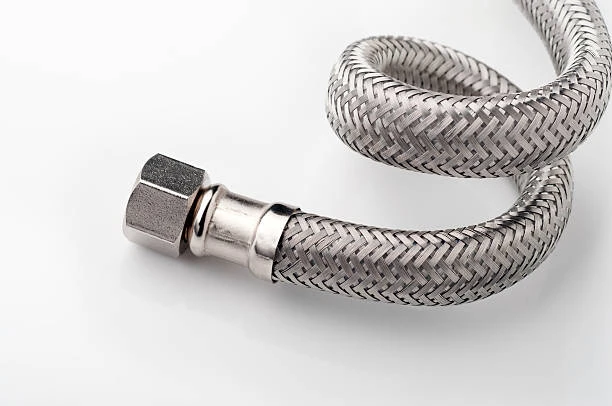
Introduction
Reinforced braid hoses are critical components in industries requiring durable, high-pressure fluid and gas transfer solutions. These hoses feature a multi-layered design—inner tube, braided reinforcement, and protective outer cover—to ensure strength, flexibility, and resistance to wear. Selecting the right reinforced braid hose requires understanding material compatibility, pressure ratings, and industry-specific needs. This guide explores the key skills needed for proper hose selection, installation, and maintenance, along with their defining characteristics, common applications, and answers to frequently asked questions.
Basic Definition and Characteristics
A reinforced braid hose consists of three primary layers:
- Inner Tube: Made from rubber, PVC, or PTFE, this layer ensures compatibility with the transported medium (water, oil, chemicals, or gases).
- Reinforcement Layer: Typically woven from polyester, nylon, or stainless steel wire, this braided structure provides tensile strength and prevents bursting under pressure.
- Outer Cover: Protects against abrasion, UV exposure, and chemical corrosion, often made from synthetic rubber or thermoplastic materials.
Key Features:
- Pressure Resistance: Steel-braided hoses support up to 6,000 PSI (hydraulic systems), while textile-reinforced variants suit lower pressures (under 1,000 PSI).
- Flexibility: Textile braids offer tight bend radii, ideal for dynamic applications, whereas steel braids balance strength and maneuverability.
- Temperature Range: Most operate between -40°C to +150°C, with specialized variants for extreme conditions.
- Transparency: Clear PVC or silicone hoses allow flow monitoring in food, beverage, or medical applications.
- Certifications: FDA, NSF, or REACH compliance ensures safety for food, pharmaceutical, or potable water use.
Essential Skills for Working with Reinforced Braid Hoses
1. Selecting the Right Hose for the Application
- Pressure Requirements: High-pressure hydraulic systems (e.g., construction equipment) need steel-braided hoses, while low-pressure pneumatic systems may use textile braids.
- Material Compatibility: PTFE-lined hoses are ideal for chemicals, while PVC suits water and mild solvents.
- Flexibility Needs: Dynamic applications (e.g., robotics, automotive) require highly flexible textile braids, whereas static systems can use stiffer steel braids.
2. Proper Installation Techniques
- Avoiding Kinks: Ensure hoses are routed with smooth bends to prevent flow restriction and premature wear.
- Secure Fittings: Use compatible couplings and crimp them properly to prevent leaks under pressure.
- Length Considerations: Allow extra length for movement in dynamic applications to reduce stress on connections.
3. Maintenance and Inspection
- Regular Checks: Look for abrasions, cracks, or bulges, which indicate wear or impending failure.
- Pressure Testing: Periodically test hoses in high-pressure systems to ensure integrity.
- Replacement Intervals: Follow manufacturer guidelines, as braided hoses degrade over time even without visible damage.
4. Troubleshooting Common Issues
- Leaks at Fittings: Often caused by improper crimping or incompatible couplings.
- Hose Bursting: Usually due to exceeding pressure ratings or using a damaged hose.
- Reduced Flexibility: Can indicate internal wear or chemical degradation of the inner tube.
Common Uses and Industries
Reinforced braid hoses serve diverse sectors due to their adaptability and resilience:
1. Aerospace & Aviation
- Hydraulic & Fuel Systems: Steel-braided hoses handle extreme pressures in landing gear and fuel delivery, complying with AS1946 standards.
2. Automotive & Motorsports
- Brake & Fuel Lines: Steel braiding minimizes expansion under pressure, enhancing control in high-performance vehicles.
3. Industrial & Manufacturing
- Hydraulic Machinery: Excavators and presses use steel-braided hoses for power transmission under heavy loads.
4. Food & Pharmaceutical
- Beverage Lines: FDA-compliant PVC hoses transport liquids like milk and juices safely.
5. Marine & Offshore
- Bilge Pumps: Corrosion-resistant steel braids endure saltwater exposure.
FAQs (Frequently Asked Questions)
1. How do I choose between textile and steel braiding?
Textile braids suit low-pressure, high-flexibility needs (e.g., pneumatic lines), while steel braids excel in high-pressure hydraulic systems.
2. What certifications should I check for food-grade hoses?
Look for FDA, NSF-51 (food equipment), and NSF-61 (potable water) compliance.
3. Can reinforced hoses handle both liquids and gases?
Yes, provided the inner tube material is compatible (e.g., PTFE for chemicals, PVC for water).
4. How often should I inspect reinforced braid hoses?
High-pressure systems require checks every 3–6 months, while low-pressure systems can be inspected annually.
5. What causes premature hose failure?
Common causes include exceeding pressure ratings, improper installation, chemical incompatibility, or abrasion.
Conclusion
Reinforced braid hoses are indispensable across industries for their durability, flexibility, and resistance to extreme conditions. Proper selection, installation, and maintenance skills ensure optimal performance and longevity. By understanding material options, pressure ratings, and industry-specific requirements, professionals can maximize efficiency and safety in hydraulic, automotive, marine, and chemical applications. Whether for high-pressure machinery or sterile fluid transfer, these hoses deliver the strength and adaptability needed for demanding environments.







